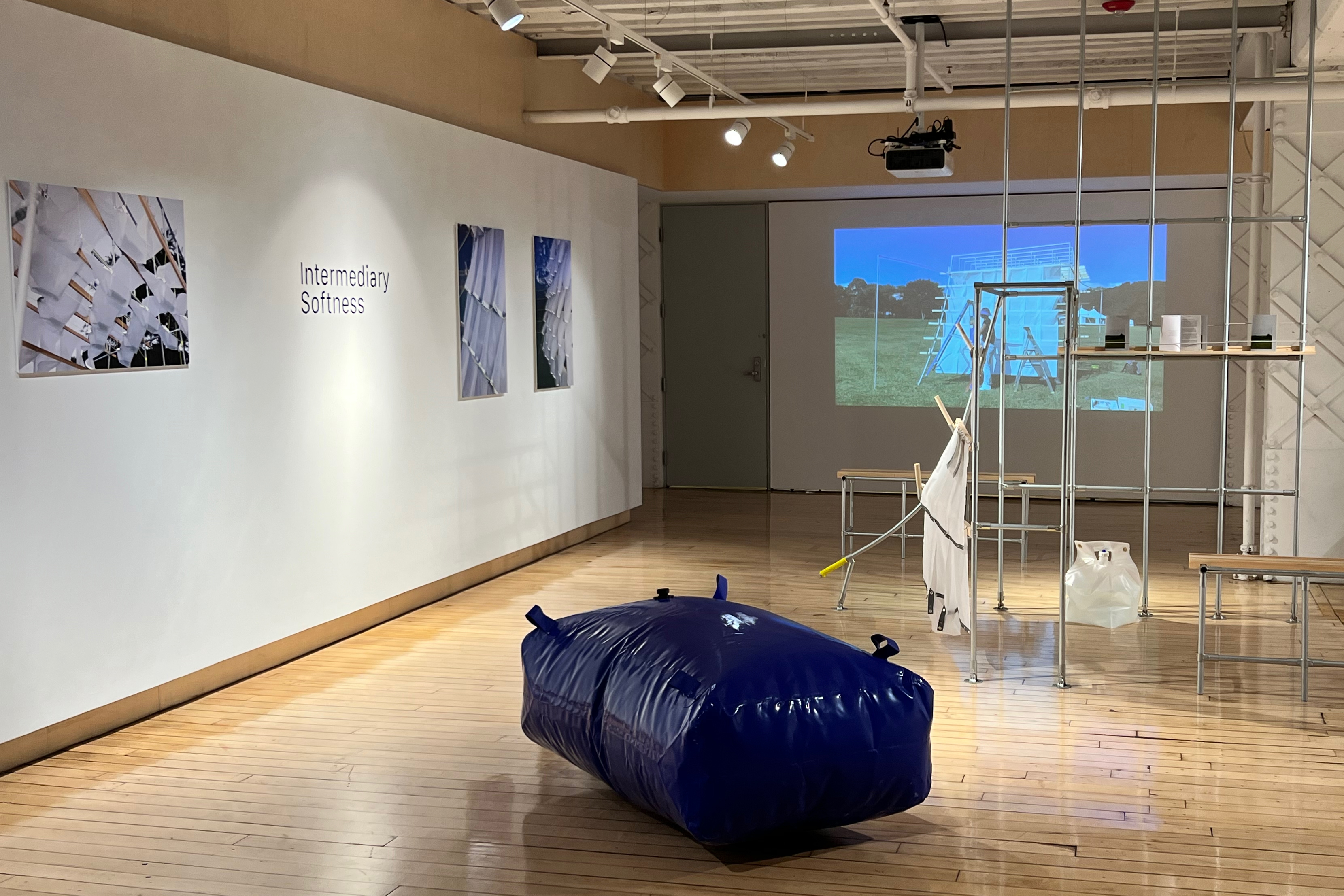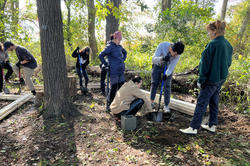Four ongoing research projects by faculty and recent alums focus on composting, improving the visual data used to drive climate research, sustainable biomaterials and tenants’ rights.
Architect Debbie Chen Completes Yearlong Seed-Funded Research Project Focused on Water

“As an architect, I’m really interested in the slippery boundary between architecture and infrastructure,” says Assistant Professor Debbie Chen, graduate program director in RISD’s Architecture department. “This project represents the first in a series of investigations into the largely invisible infrastructural systems we use in the built environment.”
Chen is discussing Intermediary Softness, a yearlong research project investigating water that she conducted with graduate assistants Alex Croft MArch 25, Aleza Epstein MArch 24, Pateton Gonzales MArch 25 and Isabelle Troutman MArch 25. The study culminated this fall in an exhibition in the Architecture department’s BEB Gallery and a pavilion constructed at Tillinghast Place, RISD’s coastal property in Barrington (see image, above).


The work was financed by the department’s Design Research Seed Fund, which supports one faculty research project each year and provides students with opportunities to participate in design research. Chen recently earned a new grant through the Somerson Sustainability Innovation Fund, managed by RISD Research, that will allow her to continue the project by investigating energy infrastructures in the coming academic year.
“For this first phase, we looked at the complicated relationship between architecture and water—an essential resource whose vitality has been made invisible through the efficiencies of our technologies,” Chen explains. “We design buildings to shed water in order to avoid mold, but as inhabitants of architecture, we also want to harvest water, which is heavy and cumbersome.”
Chen’s team began last spring by taking a deep dive into the many kinds of water containment systems humans have developed, from serving-sized pouches to massive cisterns connected to pipes. Chen describes the project as a “whimsical provocation” but also notes its pressing underlying goal: pivoting away from understanding infrastructure as bureaucratic and fixed towards a framework that appreciates these systems as imperfect, flexible and ultimately in need of care. As the climate rapidly changes, Intermediary Softness argues for a different type of infrastructural apparatus that relies on mutual dependencies and a deeper intimacy with natural resources.


The installation the team designed plays off the idea of shedding water and focuses on the ubiquitous shingle. Rather than employing hard, asphalt shingles to shed water (as is the norm), the pavilion uses soft shingles made of nylon ripstop that direct rainwater into pouches, so it can be collected. When it’s not raining, Chen adds, the shingles “move in the wind and create delightful patterns of light and shadow.” They connect to wooden beams, which add a natural element to the material palette, and are joined to a structural frame made of accessible, “off-the-shelf” aluminum conduit.
“When we conduct design-build projects related to the climate, it’s critical to test them at full scale—one to one—rather than working in a microcosm,” Chen adds. “The structure we designed and built asks how much water one building can collect. Eschewing efficiency for delight, the pavilion holds just enough water—for just long enough—to remind us that burden and bounty are held in balance.”
Simone Solondz / photos by Debbie Chen and Ella Baum MFA 25 PH
October 7, 2024


